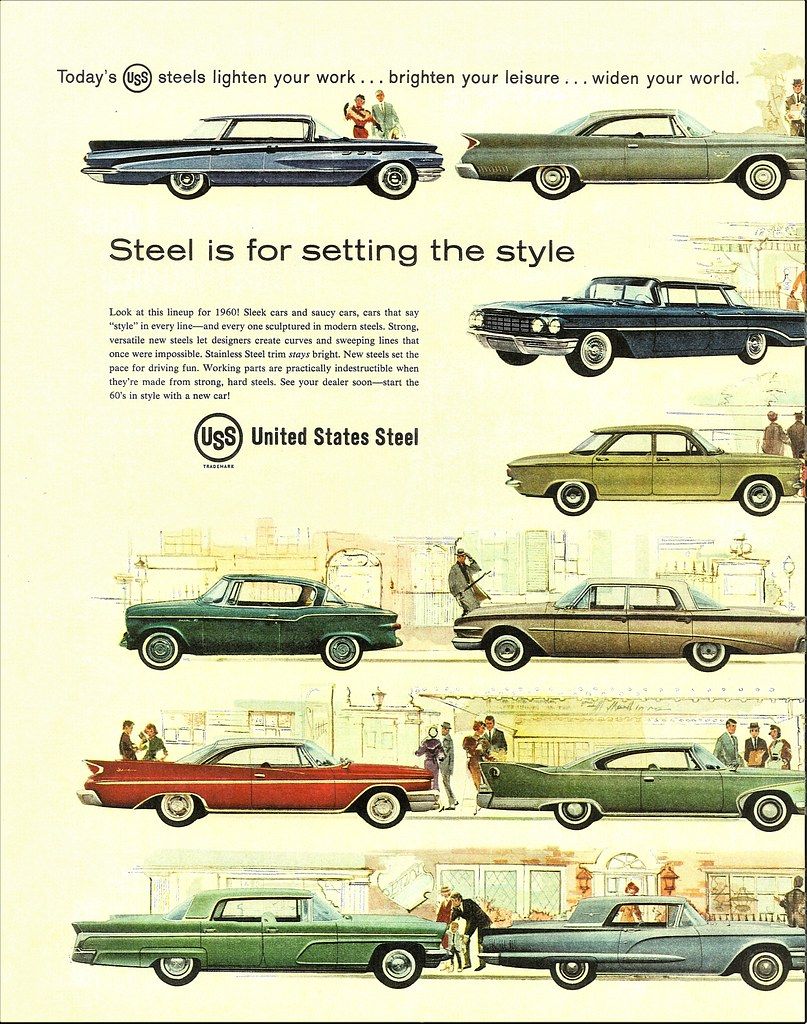
The 1960s stand as a monumental decade in American automotive history, a period that emphatically cemented the muscle car as an unrelenting force in the nation’s cultural fabric. This was an era defined by a potent fusion of engineering ambition, aggressive styling, and a burgeoning desire for accessible power on the street. With their powerful V8 engines and often surprising affordability, these machines delivered unmatched performance for their time, carving out a legendary status that endures to this day. They are not merely vehicles; they are cultural icons, testaments to a high-horsepower philosophy that captivated a generation.
Indeed, the concept of the muscle car, a production-based, factory-built, midsize American car with a large engine boasting outsized power, truly came into its own during this vibrant period. While early precursors like full-size cars with powerful engines certainly played a part in motorsports, the true muscle car distinguished itself by embracing street performance over racing, partly influenced by the AMA’s restrictions on manufacturers in competition. These cars were designed to appeal to a younger, baby-boomer market, offering thrilling acceleration and distinctive visuals, often identified by special performance badging and prominent engine-size call-outs. They represented a shift, bringing race-track excitement to the everyday enthusiast.
Navigating the landscape of 1960s performance vehicles to identify the “best daily driver muscle cars” requires a nuanced perspective. While some iconic models were purpose-built for drag strips and homologation, pushing the boundaries of raw speed, others masterfully blended formidable power with a degree of street usability and broader appeal. These are the machines that offered exhilarating performance without entirely sacrificing the practicalities of a street-legal vehicle, becoming cherished possessions for enthusiasts who wanted to experience the horsepower war on their daily commutes and weekend cruises. Join us as we explore the pioneers and powerhouses that set the standard for daily-drivable muscle in the heart of the ’60s.
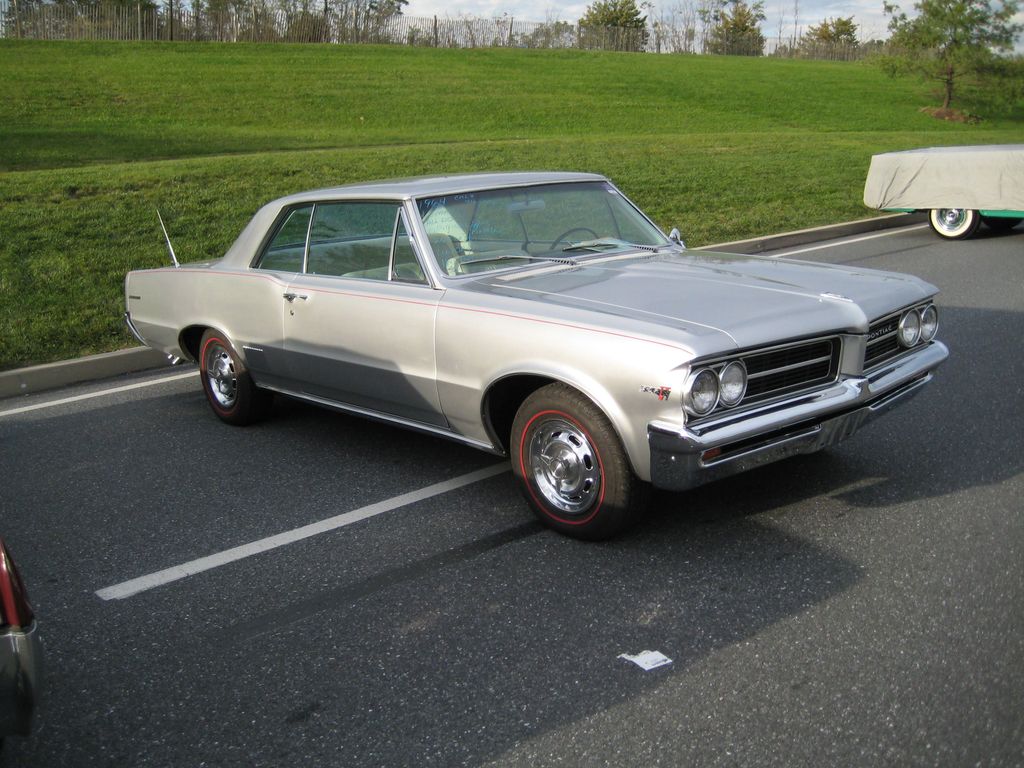
1. **1964 Pontiac Tempest GTO**For many enthusiasts and historians, the 1964 Pontiac Tempest GTO proudly carries the mantle of being the first true muscle car, a revolutionary machine that defied corporate conventions and ignited a cultural phenomenon. Its genesis was a bold move by Pontiac, which ingeniously offered the GTO as a trim level on the midsize LeMans model. This decision flew in the face of General Motors’ official stance on moving away from racing and performance, specifically exceeding the corporate engine displacement limit of 330 cubic inches for midsize models, a risk that ultimately paid off handsomely due to the model’s unprecedented sales success.
Under the hood, the 1964 GTO was a force to be reckoned with, offering a potent V8 engine that could be specified with either 325 or 348 horsepower, delivering a robust 428 lb-ft of torque. This formidable powertrain enabled the GTO to achieve a 0-60 mph time of around 6.6 seconds, a highly respectable figure for its era and certainly quick enough to thrill on public roads. Drivers also had a choice of transmissions to match their preferences, with options including a 3-speed manual, a 4-speed manual, or a 2-speed automatic, further enhancing its versatility as a daily-drivable performance car.
More than just its impressive specifications, the 1964 Pontiac GTO’s impact on the automotive landscape was profound and far-reaching. It proved beyond doubt that a significant market existed for midsize cars imbued with large-displacement engines, essentially kickstarting the muscle car trend that would dominate the decade. Its unmitigated popularity demonstrated that performance and style could be packaged in an accessible, street-oriented vehicle, paving the way for countless competitors and cementing its legacy as a true trailblazer.
Car Model Information: 2023 GMC Sierra 1500 Denali
Name: Pontiac GTO
Caption: 2005 Pontiac GTO
Manufacturer: Pontiac (automobile),Holden
Class: Mid-size car,Compact car,Mid-size car
Production: 1963–1974,2003–2006
Predecessor: Pontiac Tempest
Layout: Front-engine, rear-wheel-drive layout
ModelYears: 1964-1974 2004-2006
Categories: 1970s cars, 2000s cars, All articles with unsourced statements, Articles with short description, Articles with unsourced statements from October 2008
Summary: The Pontiac GTO is a front-engine, rear-drive, two-door, and four-passenger automobile manufactured and marketed by the Pontiac division of General Motors over four generations from 1963 until 1974 in the United States — with a fifth generation made by GM’s Australian subsidiary, Holden, for the 2004 through 2006 model years.
The first generation of the GTO is credited with popularizing the muscle car market segment in the 1960s. Some consider the Pontiac GTO to have started the trend with all four domestic automakers offering a variety of competing models.
For the 1964 and 1965 model years, the GTO was an optional package on the intermediate-sized Pontiac LeMans. The 1964 GTO vehicle identification number (VIN) started with 22, while the 1965 GTO VIN began with 237. The GTO was designated as a separate Pontiac model from 1966 through 1971 (VIN 242…). It became an optional package again for the 1972 and 1973 intermediate LeMans. For 1974, the GTO was an optional trim package on the compact-sized Ventura.
The GTO model was revived for the 2004 through 2006 model years as a captive import for Pontiac, a left-hand drive version of the Holden Monaro, itself a coupé variant of the Holden Commodore.
Get more information about: Pontiac GTO
Buying a high-performing used car >>>
Brand: Pontiac Model: Tempest GTO
Price: $44,488 Mileage: 99,168 mi.
Read more about: Unearthing Hidden Horsepower: 10 Rare Muscle Cars Collectors Are Finally Noticing
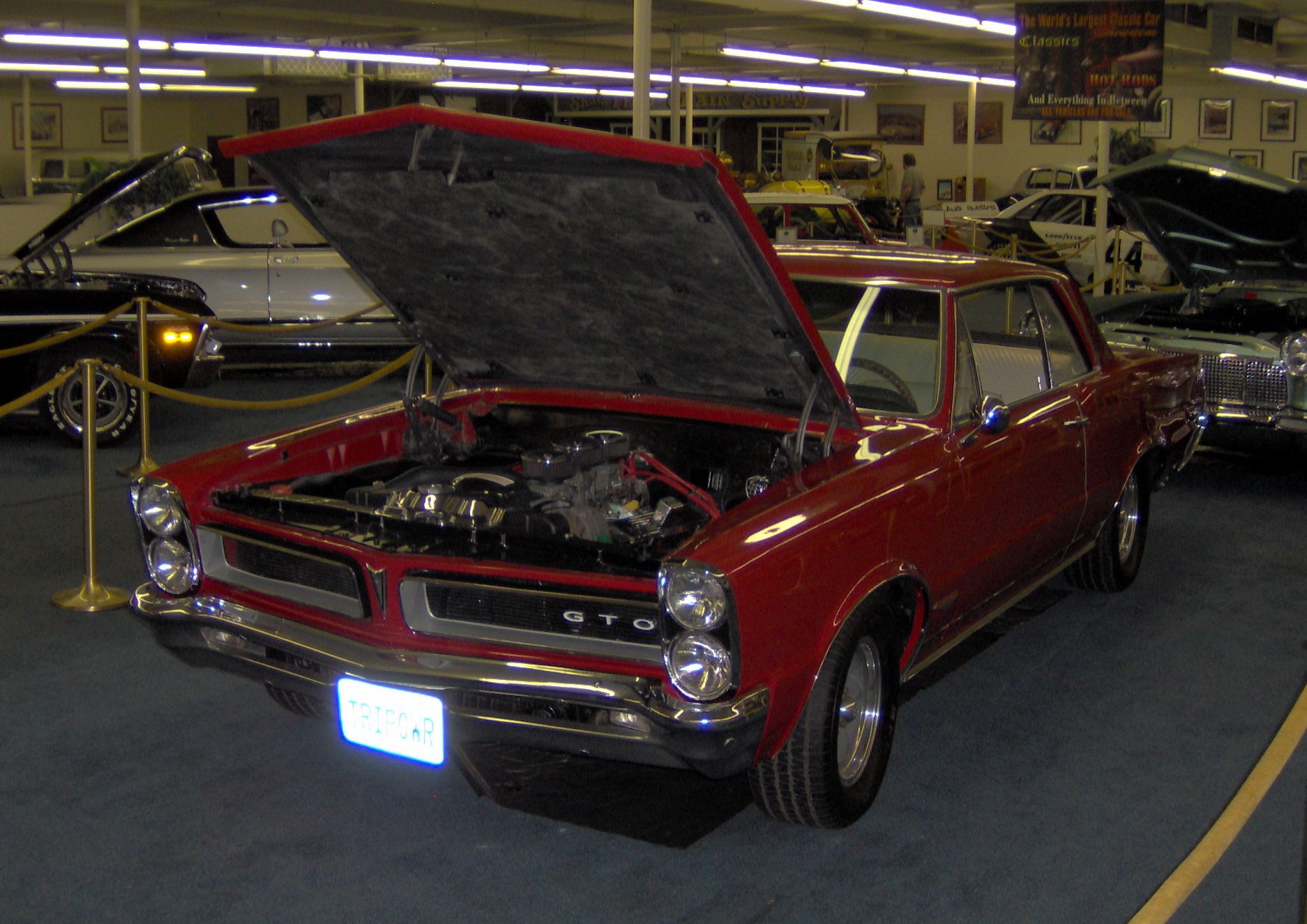
2. **1965 Pontiac GTO Tri-Power**Building upon the groundbreaking success of its 1964 predecessor, the 1965 Pontiac GTO emerged as a refined and even more desirable iteration, solidifying its position at the forefront of the burgeoning muscle car movement. The year 1965 marked a significant period of refinement for the GTO, with enhancements that included better brakes, heavy-duty shocks, and a stronger anti-sway bar, all contributing to a more controlled and engaging driving experience. However, the true highlight for performance enthusiasts was the optional and fabled “Tri-Power” engine combination.
This iconic Tri-Power setup involved three two-barrel carburetors precisely positioned atop the 389 cubic inch V8 engine. This sophisticated induction system boosted the engine’s horsepower rating to a commanding 360 hp, providing an exhilarating surge of power that truly defined the muscle car experience. Crucially, the context notes that this combination delivered “incredible acceleration while still being drivable every day,” a testament to its dual nature as both a high-performance machine and a genuinely usable street car, perfectly aligning with the spirit of a daily driver.
The 1965 GTO’s appeal was undeniable, and its sales figures reflected its immense popularity, more than doubling to an impressive 75,342 units. This commercial triumph unequivocally demonstrated the massive market for mid-sizers equipped with large-displacement engines and bold styling. Aesthetic touches introduced that year, such as the distinctive stacked headlights and more advanced suspension geometry, further amplified its visual and dynamic appeal, firmly setting the stage for the enduring muscle car trend and reinforcing the GTO’s status as a formidable yet street-friendly icon.
Car Model Information: 1966 Pontiac GTO Coupe
Name: Pontiac GTO
Caption: 2005 Pontiac GTO
Manufacturer: Pontiac (automobile),Holden
Class: Mid-size car,Compact car,Mid-size car
Production: 1963–1974,2003–2006
Predecessor: Pontiac Tempest
Layout: Front-engine, rear-wheel-drive layout
ModelYears: 1964-1974 2004-2006
Categories: 1970s cars, 2000s cars, All articles with unsourced statements, Articles with short description, Articles with unsourced statements from October 2008
Summary: The Pontiac GTO is a front-engine, rear-drive, two-door, and four-passenger automobile manufactured and marketed by the Pontiac division of General Motors over four generations from 1963 until 1974 in the United States — with a fifth generation made by GM’s Australian subsidiary, Holden, for the 2004 through 2006 model years.
The first generation of the GTO is credited with popularizing the muscle car market segment in the 1960s. Some consider the Pontiac GTO to have started the trend with all four domestic automakers offering a variety of competing models.
For the 1964 and 1965 model years, the GTO was an optional package on the intermediate-sized Pontiac LeMans. The 1964 GTO vehicle identification number (VIN) started with 22, while the 1965 GTO VIN began with 237. The GTO was designated as a separate Pontiac model from 1966 through 1971 (VIN 242…). It became an optional package again for the 1972 and 1973 intermediate LeMans. For 1974, the GTO was an optional trim package on the compact-sized Ventura.
The GTO model was revived for the 2004 through 2006 model years as a captive import for Pontiac, a left-hand drive version of the Holden Monaro, itself a coupé variant of the Holden Commodore.
Get more information about: Pontiac GTO
Buying a high-performing used car >>>
Brand: Pontiac Model: GTO
Price: $59,991 Mileage: 4,408 mi.
Read more about: Barn Find Hunter’s Ultimate Quest: Unearthing 10 Legendary Automotive Treasures From Forgotten Garages and Expansive Estates
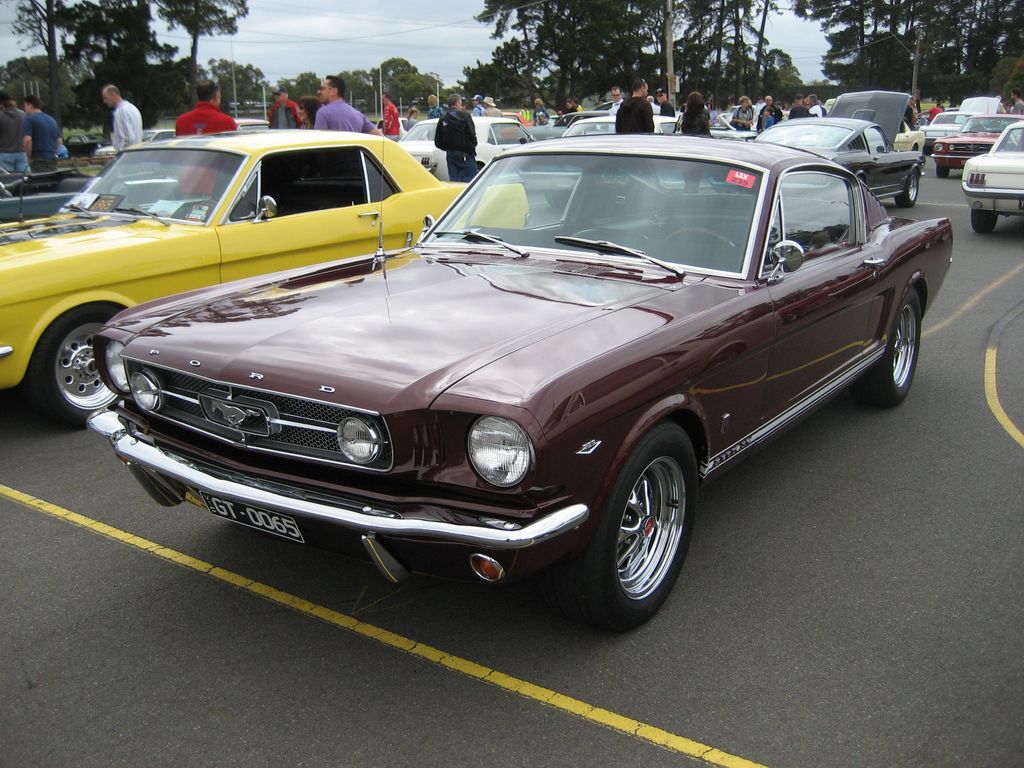
3. **1965 Ford Mustang GT 289**While sometimes categorized as a pony car, the Ford Mustang undeniably played a pivotal role in the ’60s performance landscape, blurring the lines and capturing the hearts of a vast new market, particularly with the introduction of the 1965 Ford Mustang GT 289. The Mustang created an entirely new segment upon its debut, and the GT 289 variant exemplified how a stylish, relatively compact car could also deliver exhilarating performance, becoming a revered choice for enthusiasts seeking both iconic design and robust street capabilities.
At the heart of the 1965 Ford Mustang GT 289’s appeal was its highly regarded 289 engine, a powerplant that still draws raves from muscle car enthusiasts for its classic design and impressive performance. This engine offered up to 271 hp with a stout 312 lb-ft of torque, translating into a genuinely quick machine. The vehicle could achieve a 0-60 mph time of 5.2 seconds, a figure that underscored its athletic prowess and made it a thrilling car to pilot on everyday roads. Transmission options included a 3-speed or 4-speed manual, giving drivers direct control over its spirited output.
The 1965 Ford Mustang GT 289 stands as a testament to the fact that a vehicle could be both a sales sensation and a performance champion. Its blend of undeniable curb appeal, accessible price point, and potent engine options made it an ideal candidate for those seeking a “daily driver” that could also flex serious muscle. It offered a thrilling, engaging, and stylish motoring experience, proving that high performance didn’t have to be limited to the drag strip, but could be enjoyed by a broader audience on the streets.
Car Model Information: 1966 Ford Mustang Base
Name: Ford Mustang
Caption: 2018 Ford Mustang GT 5.0
Aka: Ford T5 (Germany)
Manufacturer: Ford Motor Company
Production: March 1964 – present
ModelYears: 1965–present
Class: Unbulleted list
BodyStyle: Unbulleted list
Layout: Front-engine, rear-wheel-drive layout
Categories: 1970s cars, 1980s cars, 1990s cars, 2+2 coupés, 2000s cars
Summary: The Ford Mustang is a series of American automobiles manufactured by Ford. In continuous production since 1964, the Mustang is currently the longest-produced Ford car nameplate. Currently in its seventh generation, it is the fifth-best selling Ford car nameplate. The namesake of the “pony car” automobile segment, the Mustang was developed as a highly styled line of sporty coupes and convertibles derived from existing model lines, initially distinguished by “long hood, short deck” proportions.
Originally predicted to sell 100,000 vehicles yearly, the 1965 Mustang became the most successful vehicle launch since the 1927 Model A. Introduced on April 17, 1964 (16 days after the Plymouth Barracuda), over 400,000 units were sold in its first year; the one-millionth Mustang was sold within two years of its launch. In August 2018, Ford produced the 10-millionth Mustang; matching the first 1965 Mustang, the vehicle was a 2019 Wimbledon White convertible with a V8 engine.
The success of the Mustang launch led to multiple competitors from other American manufacturers, including the Chevrolet Camaro and Pontiac Firebird (1967), AMC Javelin (1968), and Dodge Challenger (1970). It also competed with the Plymouth Barracuda, which was launched around the same time. The Mustang also had an effect on designs of coupes worldwide, leading to the marketing of the Toyota Celica and Ford Capri in the United States (the latter, by Lincoln-Mercury). The Mercury Cougar was launched in 1967 as a unique-bodied higher-trim alternative to the Mustang; during the 1970s, it included more features and was marketed as a personal luxury car.
From 1965 until 2004, the Mustang shared chassis commonality with other Ford model lines, staying rear-wheel-drive throughout its production. From 1965 to 1973, the Mustang was derived from the 1960 Ford Falcon compact. From 1974 until 1978, the Mustang (denoted Mustang II) was a longer-wheelbase version of the Ford Pinto. From 1979 until 2004, the Mustang shared its Fox platform chassis with 14 other Ford vehicles (becoming the final one to use the Fox architecture). Since 2005, Ford has produced two generations of the Mustang, each using a distinct platform unique to the model line.
Through its production, multiple nameplates have been associated with the Ford Mustang series, including GT, Mach 1, Boss 302/429, Cobra (separate from Shelby Cobra), and Bullitt, along with “5.0” fender badging (denoting 4.9 L OHV or 5.0 L DOHC V8 engines).
Get more information about: Ford Mustang
Buying a high-performing used car >>>
Brand: Ford Model: Mustang
Price: $32,991 Mileage: 98,811 mi.
Read more about: Beyond the Icons: Unearthing 12 Ultra-Rare Muscle Car Legends That Defined An Era
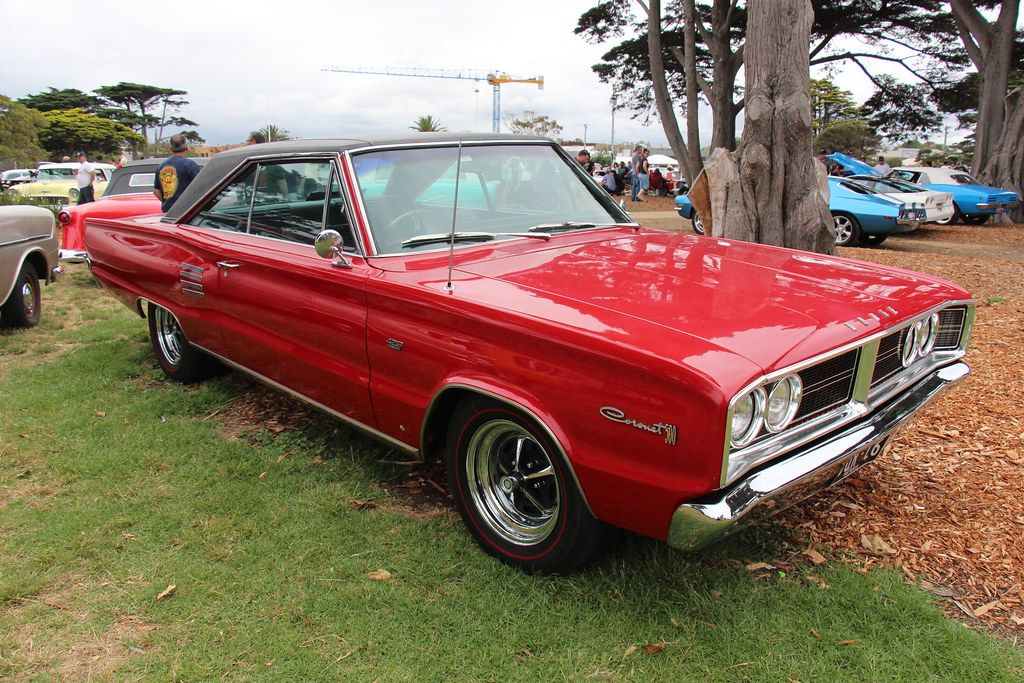
4. **1966 Dodge Coronet Street Hemi**In 1966, Chrysler made a bold statement by introducing its iconic 426 cubic inch Hemi V8 engine to a street-legal production car, most notably in the form of the Dodge Coronet Street Hemi. This significant move was largely prompted by NASCAR’s homologation rules, which had banned the race Hemi from competition after its dominant 1965 season. The mandate was clear: if you want to race it, you must make it available to the public. Thus, the formidable Hemi found its way into showrooms, offering unparalleled power to the discerning customer.
The Street Hemi, while officially rated at 425 hp, was in essence a detuned race engine, featuring highly advanced hemispherical combustion chambers and giant valves engineered for optimum airflow and maximum efficiency. This sophisticated design ensured that the Coronet delivered explosive power on demand. To cope with such immense output, the Street Hemi Coronet was also equipped with strengthened driveline parts, guaranteeing durability and reliability even under the most aggressive acceleration, making it a robust package for the street.
The arrival of the Street Hemi gave Dodge a critical competitive edge, not just in motorsport but equally importantly, in showroom sales. While its high cost led to relatively low production numbers, the model’s very existence cemented the Hemi’s reputation as one of the most feared and respected engines of the muscle-car era. It represented the pinnacle of street-legal brute force, providing a powerful, albeit thirsty, daily-drivable option for those who sought the ultimate in mid-sixties American muscle.
Car Model Information: 1967 Dodge Coronet Restomod
Name: Dodge Coronet
Caption: 1967 Dodge Coronet R/T
Manufacturer: Dodge
Production: 1949–1959,1965–1976
Class: Full-size
Predecessor: Dodge Custom
Successor: Dodge Dart
Layout: FR layout
Categories: 1950s cars, 1970s cars, All articles with dead external links, All articles with unsourced statements, Articles with dead external links from June 2016
Summary: The Dodge Coronet is an automobile that was marketed by Dodge in seven generations, and shared nameplates with the same bodyshell with varying levels of equipment installed. Introduced as a full-size car in 1949, it was the division’s highest trim line and moved to the lowest level starting in 1955 through 1959. The name was reintroduced on intermediate-sized models from the 1965 until 1976 model years. Muscle car versions were available starting in 1965 with the 383 and 426 wedge cu in (7.0 L) Chrysler RB engine, followed in 1966 by the powerful 426 cu in (7.0 L) Chrysler Hemi. Other performance models included the “Superbee”, and featured, the 383 cu in (6.3 L) Magnum, among other engine options. The nameplate “coronet” is a type of crown worn by royalty.
In the 1980s, the Coronet was used on Dodge models marketed in Colombia.
Get more information about: Dodge Coronet
Buying a high-performing used car >>>
Brand: Dodge Model: Coronet
Price: $46,500 Mileage: 2,818 mi.
Read more about: Unearthing Hidden Horsepower: 10 Rare Muscle Cars Collectors Are Finally Noticing
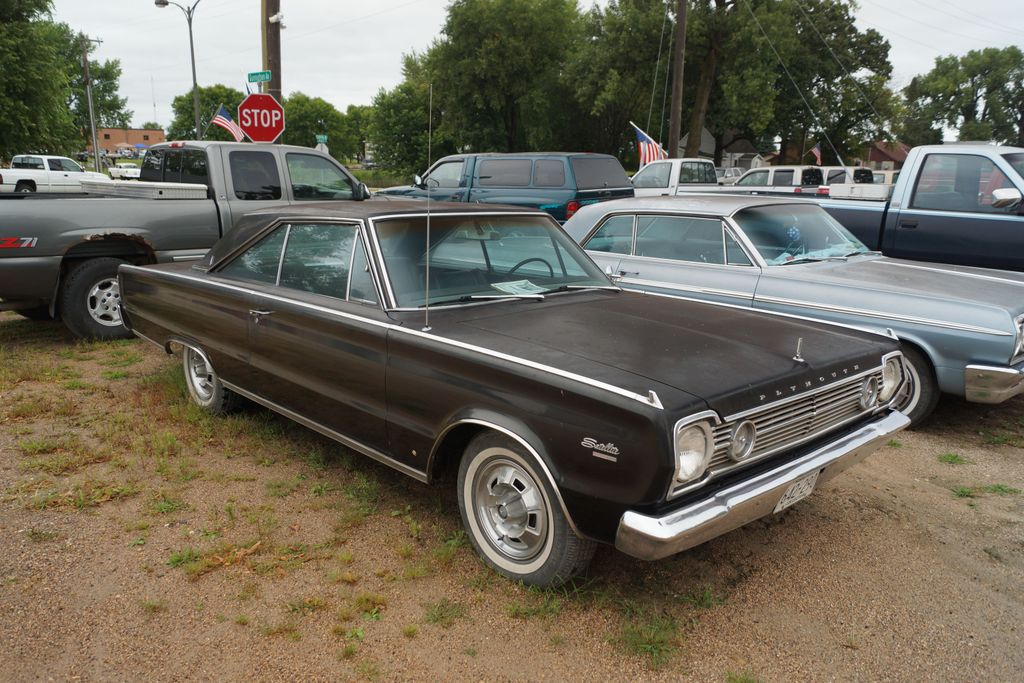
5. **1966 Plymouth Satellite 426 Hemi**Following closely in the tire tracks of its Dodge stablemate, the 1966 Plymouth Satellite 426 Hemi presented another opportunity for enthusiasts to experience Chrysler’s legendary Hemi power in a street-legal package. Sharing the same formidable 426 cubic inch Hemi V8, the Satellite offered an equally potent and thrilling driving experience, making it a top-tier contender for those seeking a powerful and iconic ’60s muscle car for the street. This car was a direct beneficiary of Chrysler’s commitment to making its race-proven technology available to the public.
Under its hood, the 1966 Plymouth Satellite 426 Hemi delivered the same staggering performance as its Coronet counterpart. Its V8 engine produced a robust 425 hp and an immense 490 ft-lb of torque, ensuring breathtaking straight-line acceleration. Paired with a standard 4-speed manual transmission, this setup allowed drivers to fully exploit the Hemi’s capabilities. Performance figures were impressive, with the Satellite capable of achieving a 0-60 mph time in a blistering 5.3 seconds. While acknowledging its significant fuel inefficiency, often yielding only 10-13 miles per gallon in city driving, this was a common characteristic and an accepted trade-off for such prodigious power in the muscle cars of the day.
The Plymouth Satellite 426 Hemi further solidified the Hemi’s reputation as a dominant force, not just on the track, but also on public roads. It represented Chrysler’s fierce dedication to performance, offering a turnkey solution for those who craved the raw, unadulterated power of a race engine in a production vehicle. Its presence in showrooms allowed more drivers to experience the thrill of the Hemi, making it a celebrated and highly desirable muscle car for enthusiasts looking for a truly potent yet accessible daily driver from the heart of the 1960s.
The initial salvo of muscle cars in the early to mid-1960s had irrevocably altered the American automotive landscape, setting the stage for an even more intense horsepower war. As the decade progressed, manufacturers refined their approaches, blending raw power with increasingly sophisticated engineering and diverse market strategies. This era saw the emergence of vehicles that not only pushed the limits of speed but also carved out distinct niches, demonstrating how versatility, aerodynamic prowess, or even strategic loopholes could define a new breed of daily-drivable street machines. These weren’t just brute-force vehicles; they were carefully honed instruments designed to deliver formidable performance to a burgeoning enthusiast base, culminating in some of the most iconic and powerful cars of their time.
Car Model Information: 1966 Plymouth Satellite .
Name: Plymouth Satellite
Manufacturer: Plymouth (automobile)
Production: 1964–1974
ModelYears: 1965–1974
Caption: 1966 Plymouth Satellite 2-door hardtop
Layout: FR layout
Class: Mid-size car
Predecessor: Plymouth Belvedere
Successor: Plymouth Fury
Platform: Chrysler B platform
Assembly: Lynch Road Assembly,Saint Louis Assembly
Categories: 1970s cars, All articles needing additional references, Articles needing additional references from April 2015, Articles with short description, Cars discontinued in 1974
Summary: The Plymouth Satellite is a mid-size automobile introduced in the 1965 model year as the top trim model in Plymouth’s “B” platform Belvedere line. Available initially in two-door hardtop and convertible models, the Satellite remained the top-of-the-line model until the 1967 model year. A station wagon version was added and a higher “Sport” trim introduced.
The Fury name was moved to Plymouth’s mid-size models for 1975, at which time the Satellite name was discontinued.
Get more information about: Plymouth Satellite
Buying a high-performing used car >>>
Brand: Plymouth Model: Satellite
Price: $31,888 Mileage: 5,771 mi.
Read more about: Unearthing Hidden Horsepower: 10 Rare Muscle Cars Collectors Are Finally Noticing
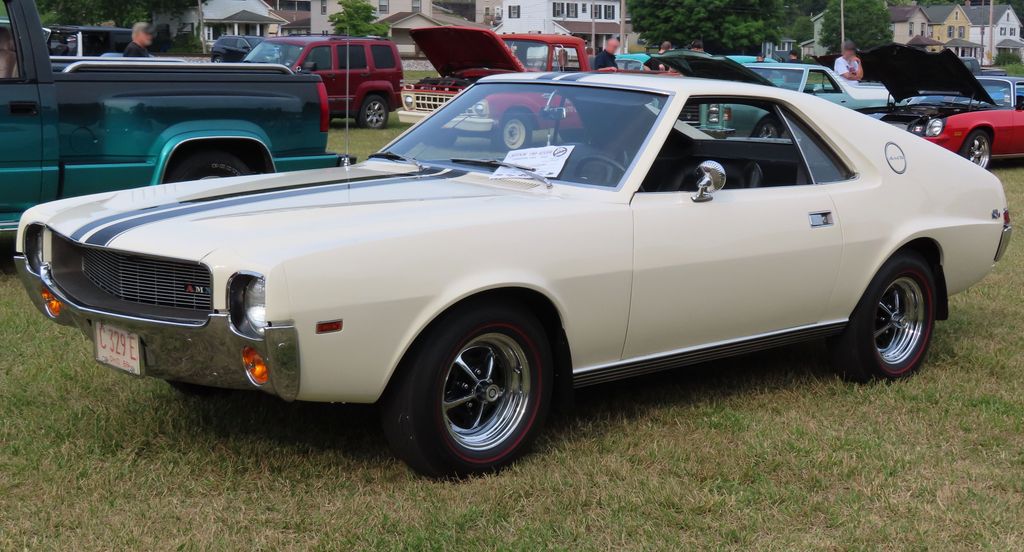
6. **1968 AMC AMX** In the fiercely competitive arena of 1960s muscle cars, American Motors Corporation (AMC) carved out a distinctive niche with its 1968 AMX, a model that defied convention by offering a two-place performance coupe. While most competitors focused on mid-size platforms, the AMX presented a unique proposition: a compact sports car designed to challenge both Ford’s wildly popular Mustang and Chevrolet’s revered Corvette. This unconventional approach, combined with its distinct styling penned by designer Dick Teague, allowed AMC to stand apart from the automotive giants of Detroit.
Under the hood, the AMX packed a serious punch, particularly with its top engine option for 1968: a 390 cubic inch V8 unit, which produced a robust 315 horsepower. When paired with a relatively light curb weight of approximately 3,000 pounds, this powertrain delivered “vertiginous acceleration,” providing a thrilling experience for drivers. Its shorter wheelbase, even compared to many pony cars, also contributed to excellent handling characteristics, offering a more agile and engaging drive than many of its larger, straight-line-focused rivals.
The AMC AMX proved that performance and attractive styling could successfully coexist within a market niche vehicle. It represented AMC’s commitment to its high-value strategy, previously seen in the successful Rambler American, but now expertly tailored to appeal to the hip baby-boomer generation. Although production numbers were not exceedingly high, the AMX’s unique blend of affordability, distinctive design, and potent performance cemented its legacy as a memorable and surprisingly capable daily driver in the muscle car melee.
Read more about: Unearthing Hidden Horsepower: 10 Rare Muscle Cars Collectors Are Finally Noticing
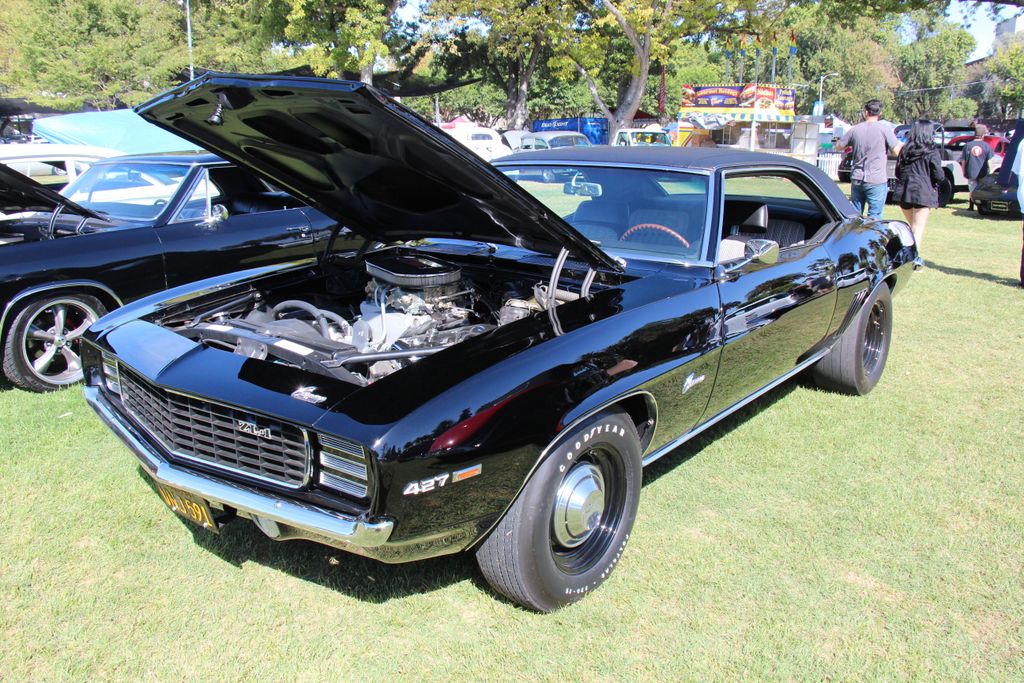
7. **1969 Chevy COPO Camaro** The 1969 Chevrolet COPO Camaro represents one of the most intriguing and legendary chapters in the muscle car narrative, a testament to how determined enthusiasts and savvy dealerships could circumvent corporate restrictions for ultimate performance. Leveraging GM’s Central Office Production Order (COPO) system, typically used for non-performance vehicle specifications, certain dealers found a loophole to install Chevy’s most potent big-block engines into the lighter Camaro chassis. This created factory-built supercars that were officially outside of GM’s internal engine size limits for the Camaro, which capped engines at 400 cubic inches.
Two primary COPO Camaro variants emerged as kings of the drag strip. The COPO 9561 option featured the formidable 427 cubic inch L72 V8, conservatively rated at 425 horsepower but widely believed to produce significantly more. Even more exclusive was the COPO 9560, which housed the all-aluminum ZL1 version of the 427 engine. With only 69 units ever built, the ZL1 COPO Camaro stands as one of the rarest and most sought-after muscle cars, renowned for its incredible power-to-weight ratio and staggering performance potential.
These COPO Camaros were not designed for luxury; they were purpose-built for drag racing, featuring heavy-duty cooling systems, strengthened drivetrain components, and minimal creature comforts. They were capable of achieving low 13-second quarter-mile times straight from the factory, with even lower times possible with expert tuning, firmly establishing them as legends of factory-high-performance. While their specialized nature might suggest they weren’t typical “daily drivers,” their street legality and the sheer thrill they offered made them the ultimate machines for those who desired unparalleled, no-compromise acceleration on demand.
Car Model Information: 1968 Chevrolet Camaro
Name: Chevrolet Camaro
Manufacturer: Chevrolet
Production: 1966–2002,2009–2023
ModelYears: 1967–2002,2010–2024
Class: Pony car
BodyStyle: coupe,convertible
Platform: GM F platform,GM Zeta platform,GM Alpha platform
Layout: Front-engine, rear-wheel-drive layout
Categories: 1970s cars, 1980s cars, 1990s cars, 2+2 coupés, 2000s cars
Summary: The Chevrolet Camaro is a mid-size American automobile manufactured by Chevrolet, classified as a pony car. It first went on sale on September 29, 1966, for the 1967 model year and was designed to compete with the Ford Mustang. The Camaro shared its platform and major components with the Firebird, produced by General Motors’ Pontiac division that was also introduced for the 1967 model year.
Four distinct generations of the Camaro were developed before production ended in 2002. The nameplate was revived on a concept car that evolved into the fifth-generation Camaro; production started on March 16, 2009.
Production of the sixth generation of the Camaro ended in December 2023, for the 2024 model year.
Get more information about: Chevrolet Camaro
Buying a high-performing used car >>>
Brand: Chevrolet Model: Camaro
Price: $79,980 Mileage: 1,713 mi.
Read more about: The Unforgettable Roar: Dominant ’60s Muscle Cars from the Big Three Automakers
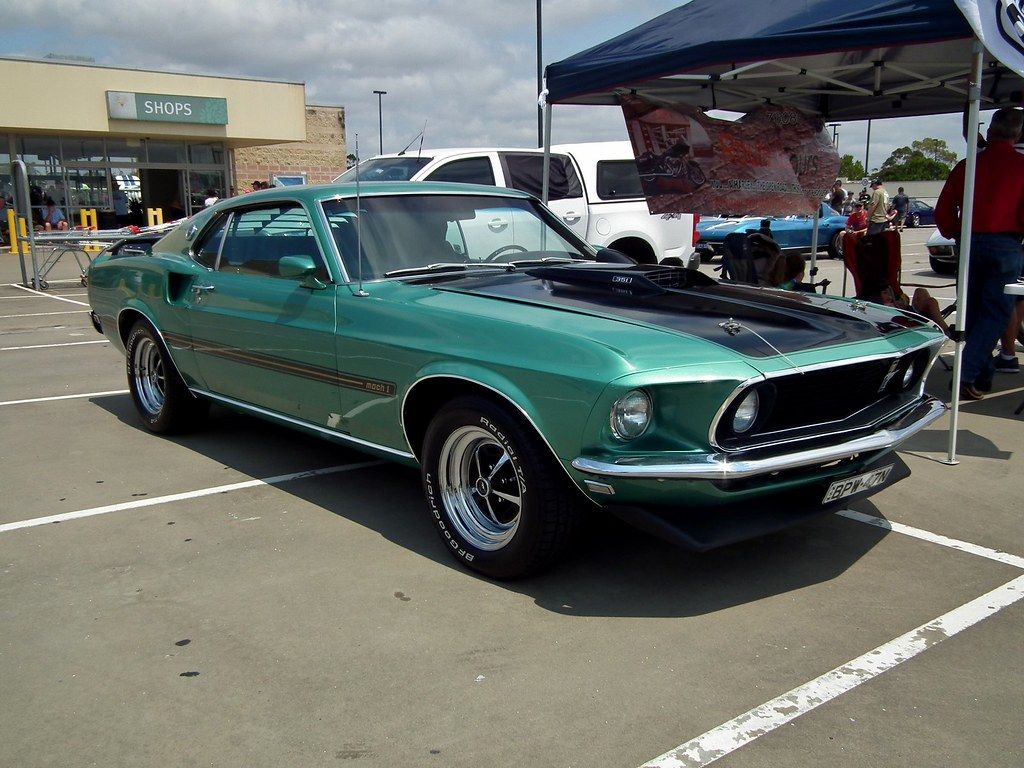
8. **1969 Ford Boss 429 Mustang** Ford’s response to the intense horsepower wars of the late 1960s, particularly within NASCAR, manifested in the creation of the extraordinary 1969 Boss 429 Mustang. This vehicle was less a mass-market performance car and more a homologation special, a “backdoor ticket to win in NASCAR.” Its primary purpose was to satisfy NASCAR rules that required a minimum number of production vehicles equipped with a specific engine to be sold to the public before it could be raced. Although the engine was destined for the midsize Torino on the track, it found its street-legal home in the Mustang.
The heart of the Boss 429 was its monstrous 429 cubic inch semi-hemi V8 engine, an engineering marvel designed to rev high and endure the rigors of sustained racing. While officially rated at a seemingly modest 375 horsepower, it was widely understood that its actual output was substantially greater, and with the right gearing, exhaust, and tune-up, it could easily “make rivals disappear in short order.” Its sheer physical size, however, presented a significant challenge, as the Mustang’s engine bay was simply too narrow to accommodate it without extensive modifications.
To overcome this, each Boss 429 Mustang was sent to Kar-Kraft of Brighton, Michigan, for substantial modifications to the engine bay before receiving its specialized Hemi engine and other performance equipment. This intricate and costly process contributed to its rarity, with only 859 units built in 1969 and a further 499 in 1970, making it one of the rarest high-performance Mustangs. Despite its understated exterior trim, the Boss 429 packed cutting-edge engine technology, securing its status as a coveted prize among collectors and a formidable, albeit specialized, daily driver for those with an appetite for serious power.
Car Model Information: 2017 Ford Mustang GT Premium
Name: Ford Mustang
Caption: 2018 Ford Mustang GT 5.0
Aka: Ford T5 (Germany)
Manufacturer: Ford Motor Company
Production: March 1964 – present
ModelYears: 1965–present
Class: Unbulleted list
BodyStyle: Unbulleted list
Layout: Front-engine, rear-wheel-drive layout
Categories: 1970s cars, 1980s cars, 1990s cars, 2+2 coupés, 2000s cars
Summary: The Ford Mustang is a series of American automobiles manufactured by Ford. In continuous production since 1964, the Mustang is currently the longest-produced Ford car nameplate. Currently in its seventh generation, it is the fifth-best selling Ford car nameplate. The namesake of the “pony car” automobile segment, the Mustang was developed as a highly styled line of sporty coupes and convertibles derived from existing model lines, initially distinguished by “long hood, short deck” proportions.
Originally predicted to sell 100,000 vehicles yearly, the 1965 Mustang became the most successful vehicle launch since the 1927 Model A. Introduced on April 17, 1964 (16 days after the Plymouth Barracuda), over 400,000 units were sold in its first year; the one-millionth Mustang was sold within two years of its launch. In August 2018, Ford produced the 10-millionth Mustang; matching the first 1965 Mustang, the vehicle was a 2019 Wimbledon White convertible with a V8 engine.
The success of the Mustang launch led to multiple competitors from other American manufacturers, including the Chevrolet Camaro and Pontiac Firebird (1967), AMC Javelin (1968), and Dodge Challenger (1970). It also competed with the Plymouth Barracuda, which was launched around the same time. The Mustang also had an effect on designs of coupes worldwide, leading to the marketing of the Toyota Celica and Ford Capri in the United States (the latter, by Lincoln-Mercury). The Mercury Cougar was launched in 1967 as a unique-bodied higher-trim alternative to the Mustang; during the 1970s, it included more features and was marketed as a personal luxury car.
From 1965 until 2004, the Mustang shared chassis commonality with other Ford model lines, staying rear-wheel-drive throughout its production. From 1965 to 1973, the Mustang was derived from the 1960 Ford Falcon compact. From 1974 until 1978, the Mustang (denoted Mustang II) was a longer-wheelbase version of the Ford Pinto. From 1979 until 2004, the Mustang shared its Fox platform chassis with 14 other Ford vehicles (becoming the final one to use the Fox architecture). Since 2005, Ford has produced two generations of the Mustang, each using a distinct platform unique to the model line.
Through its production, multiple nameplates have been associated with the Ford Mustang series, including GT, Mach 1, Boss 302/429, Cobra (separate from Shelby Cobra), and Bullitt, along with “5.0” fender badging (denoting 4.9 L OHV or 5.0 L DOHC V8 engines).
Get more information about: Ford Mustang
Buying a high-performing used car >>>
Brand: Ford Model: Mustang
Price: $30,000 Mileage: 50,437 mi.
Read more about: Unearthing Hidden Horsepower: 10 Rare Muscle Cars Collectors Are Finally Noticing
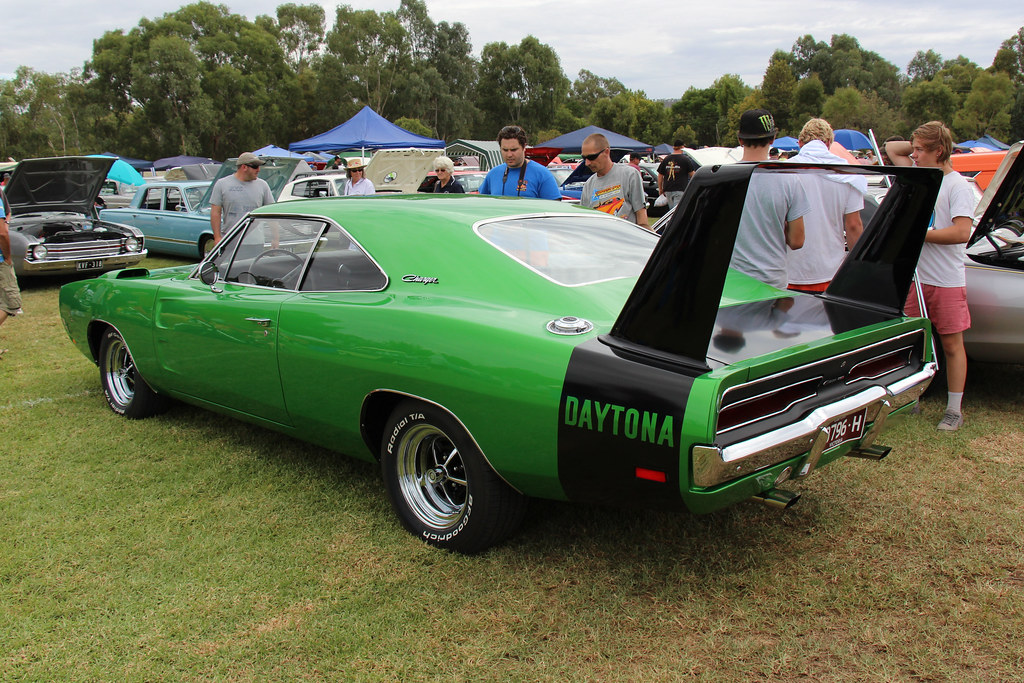
9. **1969 Dodge Hemi Daytona** As the 1960s drew to a close, the horsepower battle reached a dramatic crescendo, fueled by technological advancements, readily available and inexpensive fuel, and an eager youth market. In this environment, Dodge unleashed one of the most visually arresting and aerodynamically advanced muscle cars of all time: the 1969 Dodge Charger Daytona. This audacious machine was conceived with a singular purpose: to utterly dominate NASCAR superspeedways, and its radical design reflected this uncompromising ambition.
The Daytona’s distinctive appearance was dictated by its highly functional aerodynamic components. It featured a pointed nose cone, extensively shaped in a wind tunnel, a flush rear window for improved airflow, and perhaps most famously, a massive rear wing that stood almost two feet high. These elements were not mere styling flourishes; they dramatically reduced drag and optimized stability at blistering high speeds, allowing the Daytona to slice through the air with unparalleled efficiency. Under its sculpted hood, customers could choose between the potent 440 cubic inch Magnum V8 or the legendary 426 cubic inch Hemi, ensuring prodigious power to match its aerodynamic prowess.
On the track, the Daytona delivered on its promise, becoming the first NASCAR vehicle to officially achieve speeds exceeding 200 mph, a truly groundbreaking feat for its era. Its unmissable presence and formidable racing pedigree, combined with its limited production run of 503 units to satisfy homologation rules, have cemented its status as one of the most desirable and coveted muscle cars ever made. For a driver seeking the ultimate blend of audacious style, advanced engineering, and incredible street-legal speed from the late ’60s, the Dodge Hemi Daytona offered an experience like no other.
Car Model Information: 2021 Dodge Challenger R/T Scat Pack
Name: Dodge Charger Daytona
Caption: 1969 Dodge Charger Daytona
Manufacturer: Dodge
Production: 1969–1970,2006–2009,2013,2017–2023
Class: Muscle car
Layout: FR layout
Categories: 1960s cars, 1970s cars, 2000s cars, All articles needing additional references, All articles with unsourced statements
Summary: Dodge produced three separate models with the name Dodge Charger Daytona, all of which were modified Dodge Chargers. The name was taken from Daytona Beach, Florida, which was an early center for auto racing and still hosts the Daytona 500, NASCAR’s premier event. The original Dodge Charger Daytona was designed to beat the competition in NASCAR racing. It was the first NASCAR vehicle to reach 200 miles per hour, which was a major milestone at the time.
The first use of the ‘Daytona’ name for a car was on a version of the Studebaker Lark. The Daytona was the performance model of the compact Lark, and it was produced during the 1960s.
Get more information about: Dodge Charger Daytona
Buying a high-performing used car >>>
Brand: Dodge Model: Charger Daytona
Price: $37,986 Mileage: 20,124 mi.
Read more about: Classic Cars Skyrocketing in Value: 26 Models Worth Investing In
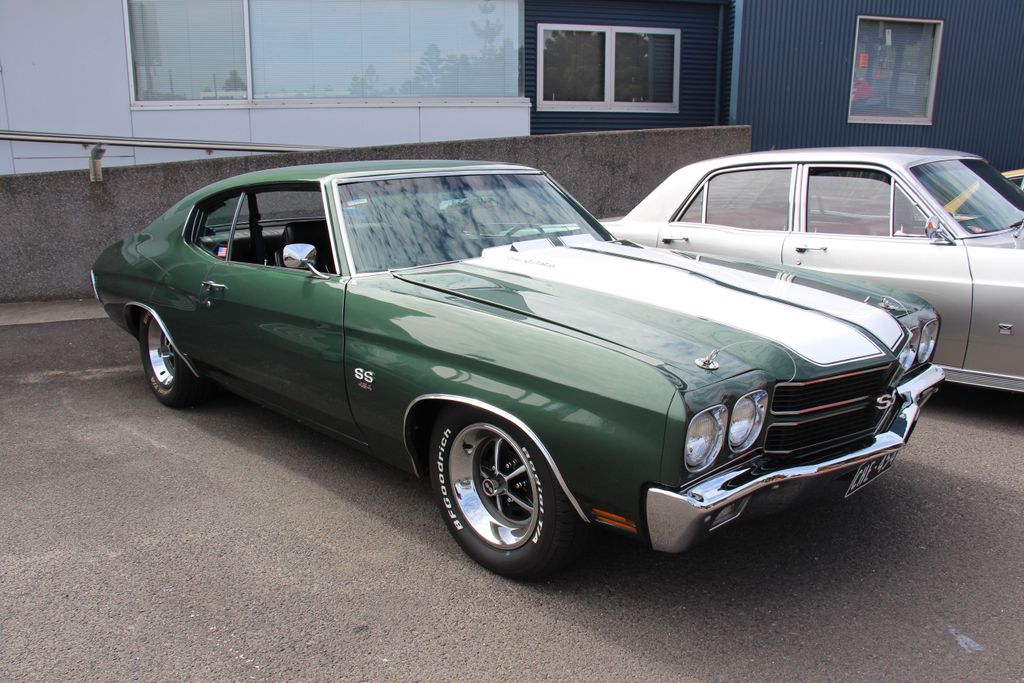
10. **1970 Chevrolet Chevelle SS454** Though technically a 1970 model year vehicle, the Chevrolet Chevelle SS454 is widely considered the ultimate culmination of 1960s muscle car development, a fitting apex to a decade defined by escalating horsepower. Building on the success of GM’s midsize A-body platform, the Chevelle SS, particularly in its 454 cubic inch big-block configuration, represented the pinnacle of available factory performance, bringing the horsepower war to an emphatic close before external factors began to rein in the excesses.
The 1970 Chevelle SS454 was available in two flavors of the gargantuan 454ci big-block engine. The LS5 model delivered a robust 360 horsepower, offering impressive performance for any enthusiast. However, it was the legendary LS6 variant that truly captured the imagination. With its solid-lifter, cowl-inducted, 11:1-compression engine producing a staggering 450 horsepower, the LS6 Chevelle SS454 was, at the time, the “most powerful production car of its time.” Its rarity, with only 4,475 LS6-powered examples produced, adds to its mystique and desirability.
This supreme Chevelle combined high-end straight-line speed with the comfort and spaciousness of a midsize coupe, making it an incredibly potent yet surprisingly practical vehicle. It symbolized the height of the muscle car era, where raw power, bold styling, and accessible performance converged in a way that would soon be constrained by emerging emissions controls and skyrocketing insurance rates. The 1970 Chevelle SS454 stands as a testament to the golden age, a truly legendary machine that represented the absolute zenith of daily-drivable American muscle.
Car Model Information: 2021 Dodge Challenger R/T Scat Pack
Aka: Ford Fairlane (Venezuela)
Name: Ford Torino
Caption: 1970 Ford Torino Cobra SportsRoof
Manufacturer: Ford Motor Company
Production: 1968–1976
Class: Mid-size car,muscle car
Layout: FR layout
Related: Mercury Montego
Assembly: ubl
Predecessor: Ford Fairlane (Americas)
Successor: Ford LTD II
Categories: 1960s cars, 1970s cars, All Wikipedia articles written in American English, All articles with vague or ambiguous time, Articles with short description
Summary: The Ford Torino is an automobile that was produced by Ford for the North American market between 1968 and 1976. It was a competitor in the intermediate market segment and essentially a twin to the Mercury Montego line.
Just as the Ford LTD had been the upscale version of the Ford Galaxie, the Torino was initially an upscale variation of the intermediate-sized Ford Fairlane. In the 1968 and 1969 model years, the intermediate Ford line consisted of lower-trim Fairlanes and its subseries, the upper-trim Torino models. In 1970, Torino became the primary name for Ford’s intermediate, and the Fairlane was now a subseries of the Torino. In 1971, the Fairlane name was dropped altogether, and all Ford intermediates were called Torino.
Most Torinos were conventional cars, and generally the most popular models were the four-door sedans and two-door hardtops. However, Ford produced some high-performance “muscle car” versions of the Torino by fitting them with large powerful engines, such as the 428 cu in (7.0 L) and 429 cu in (7.0 L) “Cobra-Jet” engines. Ford also chose the Torino as the base for its NASCAR entrants, and it has a successful racing heritage.
Get more information about: Ford Torino
Buying a high-performing used car >>>
Brand: Chevrolet Model: Chevelle SS454
Price: $37,986 Mileage: 20,124 mi.
Read more about: 12 Rides of a Lifetime: Vin Diesel’s Real-Life Car Collection That Even Dom Toretto Would Envy
The journey through the 1960s muscle car era reveals a relentless pursuit of power and performance, evolving from daring innovations to refined, formidable machines. From Pontiac’s groundbreaking GTO to the aerodynamic marvels of the Dodge Daytona and the sheer brute force of the Chevelle SS454, these vehicles transcend mere transportation, becoming enduring symbols of American ingenuity, passion, and an unyielding desire for speed. They represent a golden age where the roar of a V8 was not just an engine note, but a soundtrack to a cultural phenomenon, leaving an indelible mark on automotive history and the hearts of enthusiasts worldwide.



